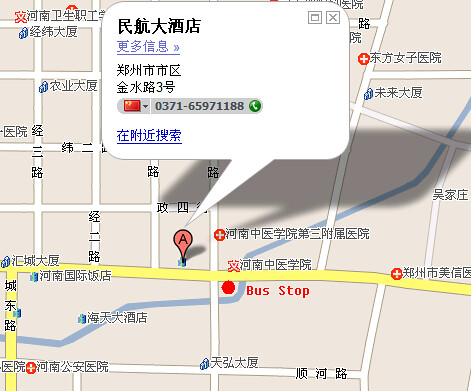My hometown Luoyang is a typical sample of recent years of urbanization process in China.
Situated in the middle of China, Luoyang is a middle sized city. Although the total population is 6 million (too big a number in US to be a middle sized city), the urban population is only about 1 million, with the rest to be rural population.
In the last 10 years, Luoyang changes a lot. When I check satellite image on Google Maps, I found due to some reason, some tiles of the map was not updated to the current image. That provided an interesting view of the past and the current picture of Luoyang on the same page.

Image in courtesy of Google Maps
As you can see from the picture above, the lower part is the original state of the land – farm land with some villages. The upper part is the current Luoyang.
Let’s take a closer look.

Image in courtesy of Google Maps
Pay attention to the strange banks of the river, and the modern cities.
Below is a bigger picture of the whole Luoyang new district.

Image in courtesy of Google Maps
Let’s spotlight some of the areas on this map:
The new stadiums:

Image in courtesy of Google Maps
The new park:

Image in courtesy of Google Maps
The astonishing big pool before the new building of the government:

Image in courtesy of Google Maps
Finally is the government building, that assemblies the forbidden city.

Image in courtesy of Google Maps
Where is the farm land, and the villages? The following interesting photo illustrated that a big road went straightly into the village, and the commercial residential areas were built at the same place. There is no way for the old village to survive. They moved away – or to be more exact, they were moved away.

My Worries
When I was younger, to have a bigger and more beautiful city was my dream. Now, after I visited many places, and thought deeper about the future of China, the change made me worry. I have few questions.
Where are the farm land?
In the last 10 years, the city of Luoyang grew crazily. They moved the government from the old city center to this land – a piece of land in the middle of no where (well, in the old standard). Then the farm land was taken, and Luoyang developed using a pattern to leverage the land typically reserved for the next century. Look at the huge projects on the land – that is exactly the project you want to build when you have too many land to spare.
Where is the money?
Why the government has so much money to build it? The secret is the land. Since in the current Chinese system, the government is the only legal middle man to transfer a piece of land from the farmer to a developer, and then to house buyers. They often offer ridiculously low price (at the time I was there, it was 20 – 50 K RMB per Chinese ace) to the farmers (and they have to move because their land buildings were announced as illegal followed by police), and then they sell the land at 10x or higher price to developer. The more land they sell, the more profit the government (to be exact, the people involved) they get. The new government buildings, and the huge projects are maybe just some change.
Unfortunately, this is the general pattern in most cities in China. IMHO, I think the only way out is to allow end house buyers to buy land directly from farmers.
Luoyang is a typical example of urbanization in China, and you see the change in a “broken” Google map.
Want to see it by yourself in Google Maps? Here is the link.







































 ”
”










